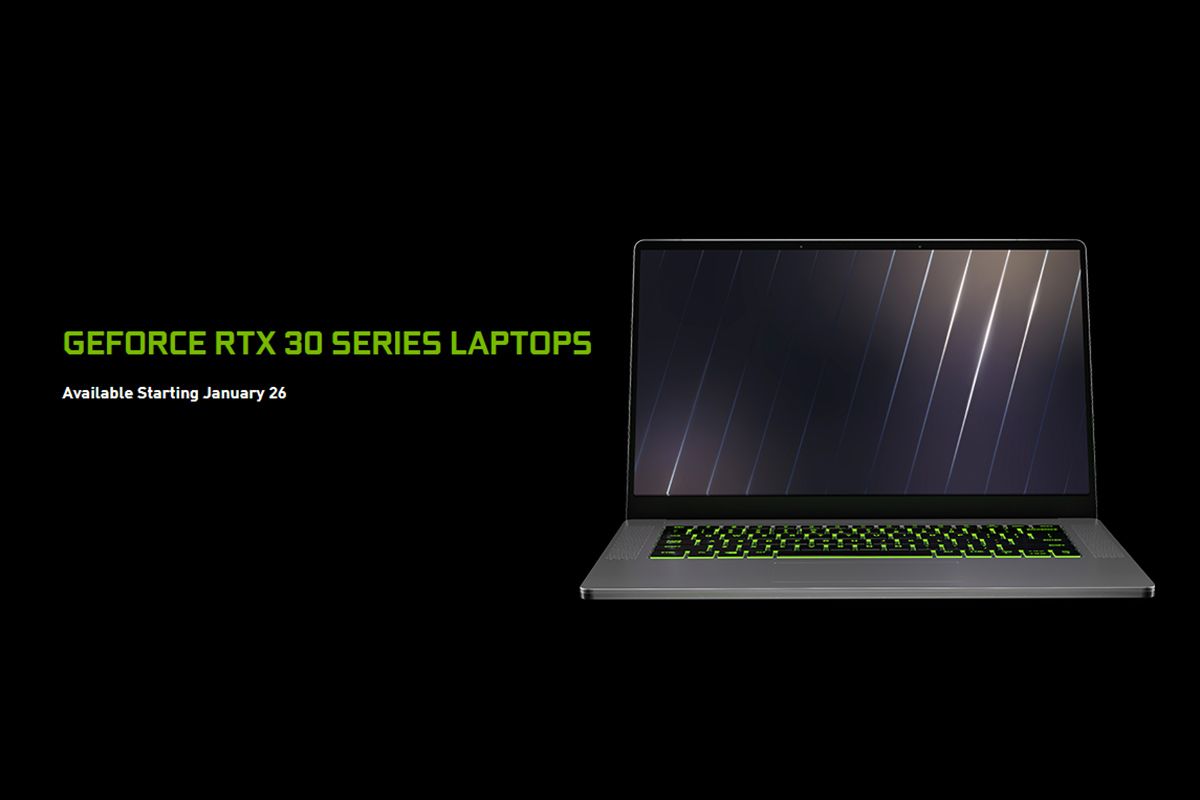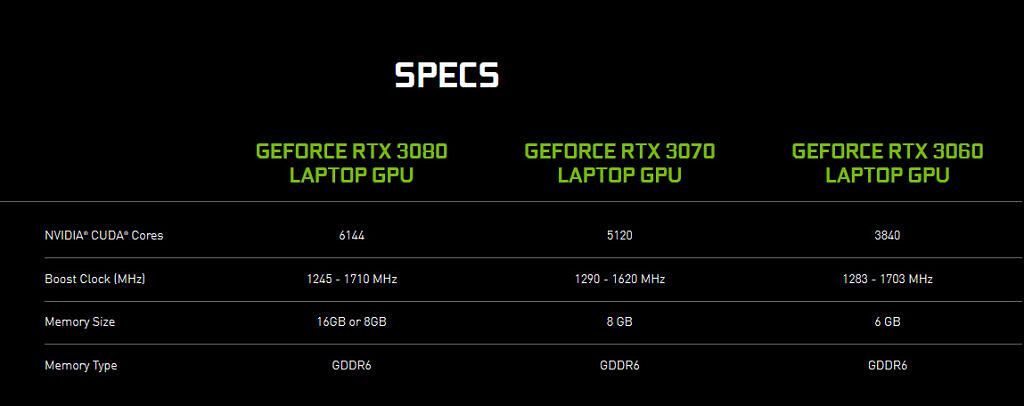After various reports, rumors, and leaks, NVIDIA has finally brought the RTX 30-series GPUs to notebooks. With the desktop GPU range hitting off with a solid start albeit short supplies, NVIDIA says that its new mobile GPUs will launch on over 70 laptops throughout this year. Just like the RTX 30 series for desktops, NVIDIA is aiming to provide improved performance at an overall reduced price point.
The new series includes the RTX 3060, RTX 3070, and the RTX 3080, all backed by a new Max-Q design to deliver optimal power and performance for notebooks. The new GeForce RTX 3060 is claimed to deliver 90fps on the latest games with ultra settings at 1080p resolution on laptops that will have a starting price of $999. NVIDIA also says that these notebooks will be able to deliver performance equivalent to the previous-gen GeForce RTX 2080 SUPER, which typically sells for $2,500. With the RTX 3070, NVIDIA is aiming at a 1440p resolution with 90fps with ultra settings. It will be 50 percent faster than the last-gen RTX 2070, and customers can expect laptops priced around $1,299 loaded with the new RTX 3070. Lastly, there is the GeForce RTX 3080 with up to 16GB of memory having the capability to deliver over 100fps with ultra settings at 1440p on notebooks having a starting price of $1,999.
With a majority of laptop gamers playing esports titles, sales of high-refresh-rate notebooks have doubled last year. Thus, more than half of the new GeForce RTX 30 Series laptops will offer 240Hz or higher refresh rates. Also with the GeForce RTX 3080, gamers will be able to experience 240fps across titles like Overwatch, Rainbow Six, Valorant, and Fortnite.
The new third-gen Max-Q design optimizes the RTX 30 GPUs. For instance, there is Dynamic Boost 2.0, where artificial intelligence-based networks balance the power between the CPU, GPU, as well as GPU memory, depending on the needs and requirements. To keep loud fans at bay, the new GPUs also feature WhisperMode 2.0, a new acoustic control for gaming laptops. Once a user sets the desired acoustics, AI-powered algorithms manage the CPU, GPU, system temperatures, and fan speeds to lower fan noise at the best possible performance. There is also Resizable BAR or what AMD calls Smart Access Memory. This PCIe-based tech allows the GPU memory to be accessed by the CPU instead of being limited to reading 256MB blocks. NVIDIA’s Deep Learning Super Sampling or DLSS also makes an appearance to deliver up to 2x the performance at the same power. The image upscaling technology is made for real-time use in select video games, where deep learning is used to upscale lower-resolution images to a higher-resolution for display on higher-resolution computer monitors.
The new RTX 30 mobile GPUs also support NVIDIA’s new tools for gamers and creators, which were announced last year with the RTX 30 desktop GPUs. These include NVIDIA Broadcast, which uses AI to let you create your own virtual greenscreen while streaming, NVIDIA Reflex, which makes competitive games quicker with sub-20ms system latency, as well as NVIDIA Studio.
Brands like Alienware, ASUS, Lenovo, Razer, and other OEMs have already announced their new gaming notebooks powered by the new NVIDIA RTX 30 series mobile GPUs. Expect notebooks with the new class of graphics processors to hit markets starting January 26.


